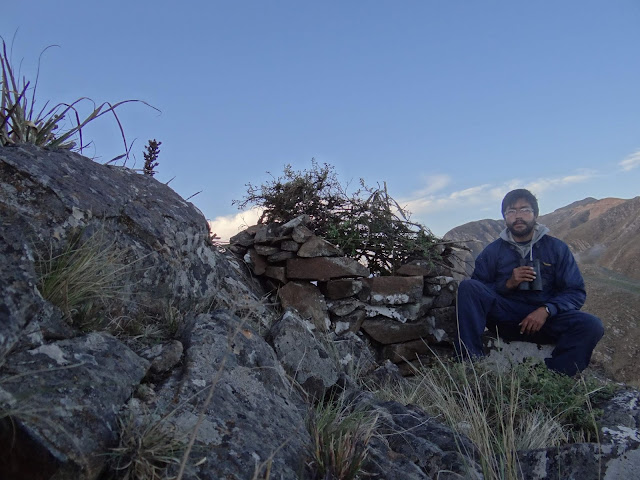Accurate predictions of the impacts of future land use change on species of conservation
concern can help to inform policy-makers and improve conservation measures. In a new paper just published in PLOS One, we introduce a method, based on open source software, which integrates habitat suitability modelling with scenario-building. We illustrate its use by investigating the effects of alternative land use change scenarios on landscape suitability for black grouse Tetrao tetrix in the Scottish uplands.
Likely changes in the uplands
The first step was to build a habitat suitability model for the species, in this case using the well-used MaxEnt. This gave a standard map of suitability for pixels across the 800 sq km landscape in Perthshire. We wanted to simulate how the upland area might change over the next 20 years so we asked upland experts how they thought the landscape might change – they told us that most likely were changes from moorland and grazed land to open canopy forestry due to native forestry planting schemes and grazed land to moorland via a reduction in grazing.
 |
| A moorland and open woodland mix in Perthshire - a potential result of the reduced grazing scenario which resulted in beneficial landscapes for black grouse (Photo: Matt Geary). |
Growing patches of new habitat
To represent how these changes in land use would affect the area, we grew patches of new habitat within the existing landscape (e.g. new patches of open woodland where moorland currently exist). We grew the new patches using a piece of old script in Mathematica supplied by Ed Harris here at MMU, which was updated to work in R and embedded into our model. For each scenario, the cover of different land use types was altered by 5–30% from 20 random starting locations – this enabled us to look at how the amount of new habitat and its spatial positioning of the new land uses might affect their impact on the grouse. We then ran the MaxEnt again with the 20 new landscapes and assessed changes in suitability – much like people do with climate change scenarios and their effects on species ranges.
Effects of land use changes
The scenario where grazed land was replaced by moorland and open forestry was the most beneficial for black grouse, and ‘increased grazing’ (the opposite conversion) the most detrimental. Positioning of new land use blocks was shown to be very important. So it is not just a case of a certain benefit or loss brought about by a certain amount habitat change - where those habitat changes occurred was also very important. This might be helpful to local land use planners and habitat managers – habitats could be placed so as to maximise benefits for a key species, or at least to minimise their detrimental effects.
 |
| An 'upland' mosaic: Ross of Mull looking across Scoor forest towards Ben Mor (Photo: Alan Fielding). |
Another important finding was that, while increasing the area of open canopy forestry caused a proportional decrease in suitability, suitability gains for the ‘reduced grazing’ scenario were nonlinear. Reducing grazing slightly to create small additional amounts of moor and open canopy woodland had small benefits to grouse, but reducing it by 20% had disproportionately large benefits in terms of habitat suitability for the species. Again, this kind of result might help inform local land management and even regional policy such as grant schemes promoting land use changes.
This ‘Scenario-led’ landscape simulation modelling can be applied in assessments of the impacts of land use change both on individual species but also on diversity and community measures, or ecosystem services. A next step would be to include landscape configuration more explicitly in the simulation models, both to make them more realistic, and to examine the effects of habitat placement more thoroughly.
Matt's PhD was funded by Manchester Metropolitan University and the World Pheasant Association. Matt is now a lecturer in Conservation Biology and Animal Behaviour at the University of Chester. Contact him at M.Geary@Chester.ac.uk. More information about his research is at http://mattgeary.github.com.










